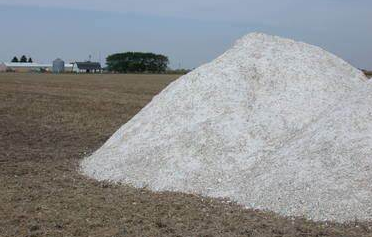Introduction
In the quest for sustainable development, it is crucial to identify and utilize natural resources that meet our present needs and preserve future generations’ well-being. Two such resources that play a significant role in various industries and have the potential for sustainable development are gypsum and silica. These minerals offer many applications, from construction materials to environmental remediation. This blog explores how gypsum and silica are natural resources for sustainable development, highlighting their properties, applications, and environmental benefits.
Sustainable development is a key component to protecting the environment and the natural resources we rely on. Silica and gypsum are two of these natural resources that has application in ways that are beneficial to sustainable development. From providing a low-cost building material to serving as a source of energy, silica and gypsum have a lot to offer in terms of sustainability. In this blog post, we’ll explore the potential benefits of these two natural resources for sustainable development.
Importance of natural resources for sustainable development
Natural resources play a crucial role in sustainable development, as they are the foundation for economic growth, social progress, and environmental stability. These resources, including air, water, land, minerals, and biodiversity, provide essential goods and services that support human well-being and the functioning of ecosystems.
Natural resources’ contribution to economic growth is one of key importance for sustainable development. Many industries rely on natural resources as inputs for production, such as agriculture, forestry, mining, and energy. These sectors generate employment opportunities, stimulate economic activity, and contribute national income. Sustainable management of natural resources ensures their availability for future generations, allowing for long-term economic development.
Moreover, natural resources are closely linking to social progress. Access to clean water, nutritious food, and adequate shelter are fundamental human rights that depend on the availability and sustainable use of natural resources. For example, forests provide timber for construction, while rivers and lakes supply water for domestic use and irrigation. By ensuring equitable access to natural resources, sustainable development promotes social equity and improves the quality of life for all individuals.
Environmental stability
It is another critical aspect of sustainable development that relies on natural resources. Ecosystems provide essential services, such as climate regulation, water purification, and soil fertility, which are vital for maintaining a healthy environment. Biodiversity, the variety of life on Earth, is also a natural resource that supports ecosystem resilience and provides numerous benefits, including medicinal plants, pollination, and genetic resources for agriculture. Protecting and conserving natural resources is essential to mitigate climate change, preserve biodiversity, and maintain the planet’s overall health.
The importance of natural resources for sustainable development cannot be overstated. They are the building blocks of economic growth, social progress, and environmental stability. By managing these resources sustainably, we can ensure their availability for future generations, promote social equity, and protect the planet’s health. Investing in the sustainable use and conservation of natural resources is a wise economic decision and a moral imperative to create a better and more sustainable future for all.
The Environmental Benefits Of Gypsum and Silica focusing Sustainable development

Silica and gypsum are two natural resources that offer significant environmental benefits when used in various applications.
Silica
It is also known as silicon dioxide, is a versatile mineral that is widely available in nature. It has numerous environmental benefits when utilized in different industries. One of the key advantages of silica is its use in the production of solar panels. Silica is a crucial component in the manufacturing of photovoltaic cells, which convert sunlight into electricity. Solar energy is a clean and renewable source of power, and by using silica in solar panels, we can reduce our reliance on fossil fuels and decrease greenhouse gas emissions. Additionally, silica is commonly used as a desiccant, which helps to control moisture and humidity levels in various products and environments. By preventing excess moisture, silica can help prevent the growth of mold and mildew, which can have detrimental effects on indoor air quality and human health. This can be particularly beneficial in buildings, warehouses, and storage facilities.
Gypsum
It is a mineral composed of calcium sulfate. It also offers several environmental advantages. One of the primary uses of gypsum is in the construction industry, where it is has application as a building material. Gypsum-based products, such as drywall, provide excellent fire resistance and sound insulation properties. By using gypsum in construction, we can enhance the safety and comfort of buildings while reducing the need for energy-intensive materials.
Furthermore, gypsum has soil amendment properties. When applied to agricultural fields, gypsum helps improve soil structure, water infiltration, and nutrient availability. This can lead to increased crop yields and reduced soil erosion. By utilizing gypsum in agriculture, we can promote sustainable farming practices and reduce the need for synthetic fertilizers, which can have negative environmental impacts.
In conclusion, silica and gypsum offer significant environmental benefits in various applications. From their use in solar panels to improve energy efficiency and reduce greenhouse gas emissions, to their role in construction and agriculture, these natural resources contribute to a more sustainable and environmentally friendly future. By harnessing the potential of silica and gypsum, we can mitigate climate change, enhance resource efficiency, and promote a healthier planet for generations to come.
Understanding Gypsum:
Gypsum, a soft sulfate mineral, is abundant in nature and possesses unique properties that make it invaluable in numerous industries. Its main component, calcium sulfate dihydrate, lends gypsum its distinctive features such as fire resistance, sound insulation, and excellent binding capabilities. These properties have made gypsum an essential ingredient in construction materials like drywall, cement, and plaster. The widespread use of gypsum-based products helps reduce environmental impact, as gypsum is a natural and readily available alternative to more energy-intensive materials.
Harnessing Silica:
Silica, or silicon dioxide, is another versatile natural resource with immense potential for sustainable development. Silica has various forms, including quartz, sand, and diatomaceous Earth. Its exceptional properties, such as high heat resistance, hardness, and electrical conductivity, make it valuable in multiple industries. Silica finds applications in producing glass, ceramics, electronics, solar panels, and even as a catalyst in chemical processes. The abundance of silica in the Earth’s crust and its recyclability contribute to its sustainability, making it an ideal resource for future development.
Sustainable Construction:
Gypsum and silica play crucial roles in the construction industry, where sustainability is a growing concern. Gypsum-based materials offer advantages such as fire resistance, thermal insulation, and moisture control, reducing energy consumption and enhancing indoor air quality. Moreover, gypsum can be recycled and reused multiple times without significantly degrading its properties, minimizing waste and conserving resources. Silica-based materials, like energy-efficient glass and sustainable concrete additives, contribute to greener construction practices, improving energy efficiency and durability.
Environmental Remediation:
Beyond construction, gypsum and silica have applications in environmental remediation. Gypsum has proven effective in soil conditioning, improving fertility, and reducing erosion. Its ability to bind with heavy metals and reduce soil salinity makes it an environmentally friendly choice for land reclamation projects. Silica, on the other hand, has adsorbent properties that enable it to capture and remove pollutants from air and water. Silica-based materials like activated carbon and silica gel are widely used for air filtration and water treatment, contributing to cleaner environments.
Future Prospects:
As the world moves toward a more sustainable future, the utilization of gypsum and silica is expected to expand further. Ongoing research and innovation aim to enhance their properties, explore new applications, and optimize their extraction and processing methods to minimize environmental impact. From developing eco-friendly construction materials to advancing clean energy technologies, gypsum and silica are poised to play pivotal roles in sustainable development initiatives.
Gypsum and silica are natural resources that offer immense potential for sustainable development across various industries. Their unique properties, versatility, and recyclability make them valuable alternatives to resource-intensive materials. By incorporating gypsum and silica into construction practices, environmental remediation projects, and other applications, we can reduce the ecological footprint and move closer to a more sustainable and greener future. Embracing the potential of these natural resources is beneficial for industries and preserving the well-being of our planet and future generations.

